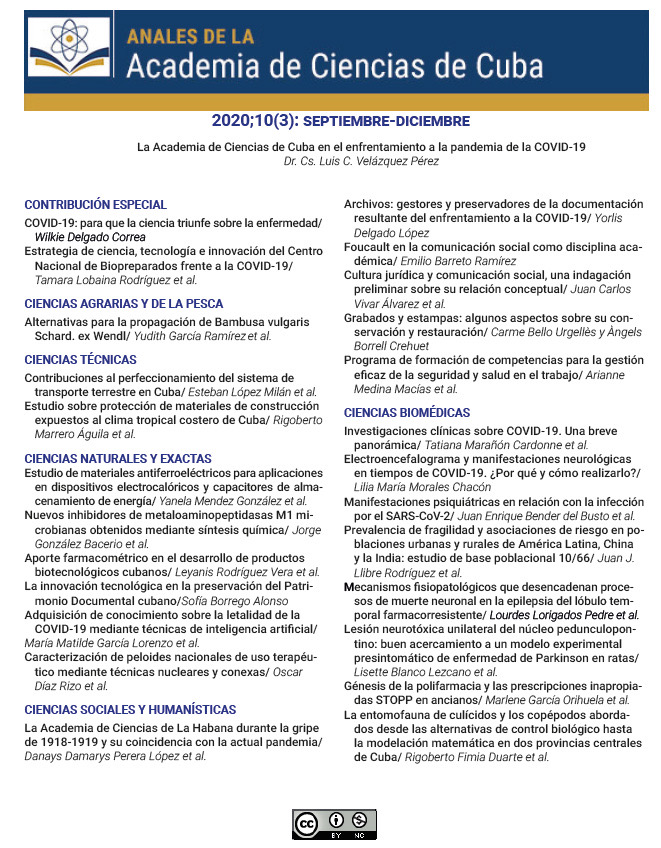Alternatives for the propagation of Bambusa vulgaris Schard. ex Wendl
Keywords:
Bamboo, macropropagation, in vitro propagationAbstract
Introduction. The high rate of visible microbial contaminants in the establishment phase, as well as a low rate of multiplication, rooting and survival ex vitro, constitute the main problems during in vitro propagation in Bambusa vulgaris Schard. exWendl. The present work was carried out with the objective of proposing new alternatives for the propagation of Bambusa vulgarisSchard. exWendl combining traditional techniques.Methods. The influence of climatic conditions on the in vitro establishment of stem segments was determined. In addition, the effect of the culture conditions on the multiplied shoots in static liquid culture medium and temporary immersion systems was studied, as well as their response during the acclimatization phase.
Results. Microbial contaminants with a high frequency of appearance associated with plants in cultivation and in vitro were identified for the first time. During the in vitro establishment of the axillary buds, 99 % sprouting and 98 % explants free of visible microbial contaminants were achieved between the months of January-April and November-December. It was shown that shoots multiplied between the sixth and eighth subculture with 12 μM 6-BAP can be used for multiplication in Temporary Immersion Systems. It was possible to increase the morpho-physiological and biochemical quality of the shoots grown in the SITs with the lowest concentration of 6-BAP (6,0μM) and an immersion time of 2 min, aspects little addressed in the bamboo species. The first studies in the species on the effect of sucrose on the morpho-physiological, anatomical and biochemical response of shoots in SITs during the in vitro- ex vitro transition were described. The plants brought to the grow house were able to emit between 4 and 7 new shoots with high survival rates during the extraction of suckers.
Downloads
Published
How to Cite
Issue
Section
License
The journal Anales de la Academia de Ciencias de Cuba protects copyright, and operates with a Creative Commons License 4.0 (Creative Commons Attribution-NonCommercial License 4.0). By publishing in it, authors allow themselves to copy, reproduce, distribute, publicly communicate their work and generate derivative works, as long as the original author is cited and acknowledged. They do not allow, however, the use of the original work for commercial or lucrative purposes.
The authors authorize the publication of their writings, retaining the authorship rights, and assigning and transferring to the magazine all the rights protected by the intellectual property laws that govern in Cuba, which imply editing to disseminate the work.
Authors may establish additional agreements for the non-exclusive distribution of the version of the work published in the journal (for example, placing it in an institutional repository or publishing it in a book), with recognition of having been first published in this journal.
To learn more, see https://creativecommons.org






